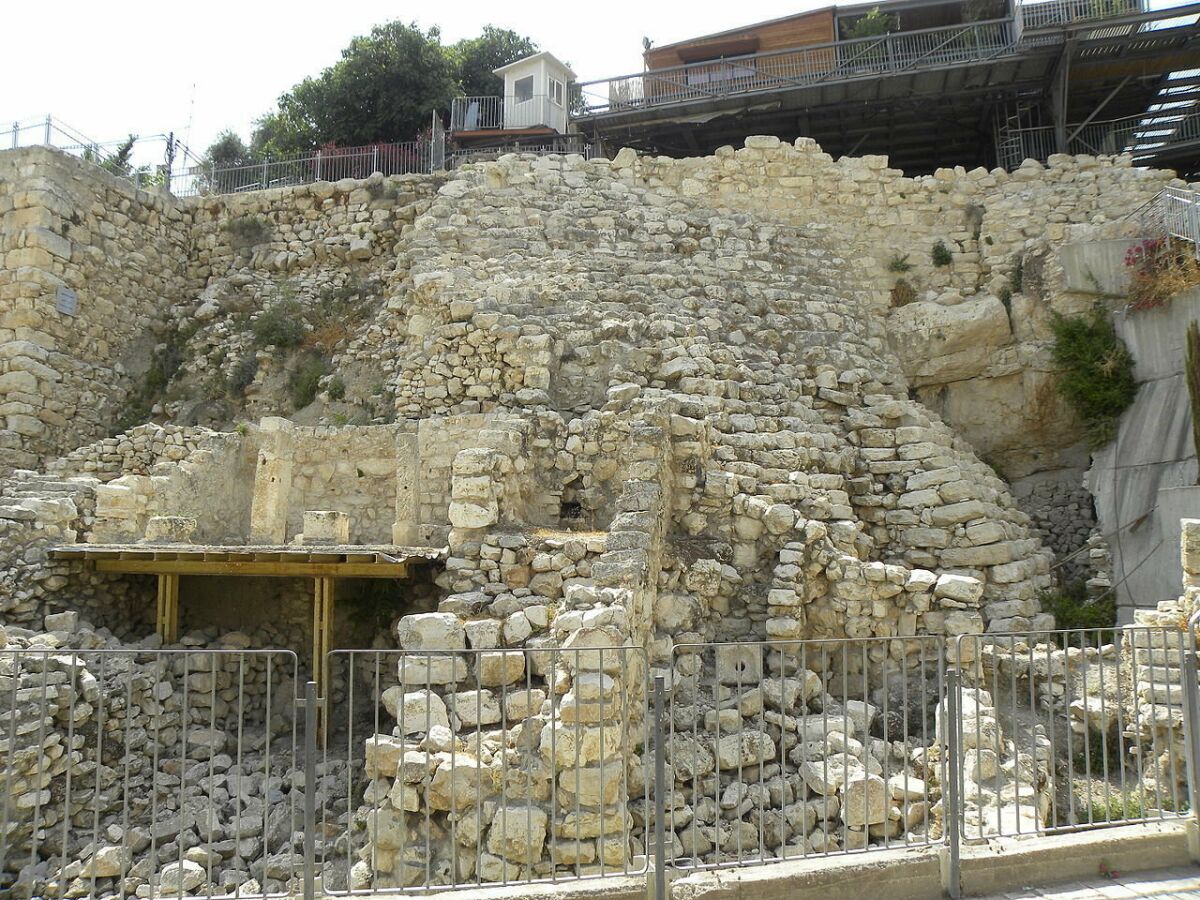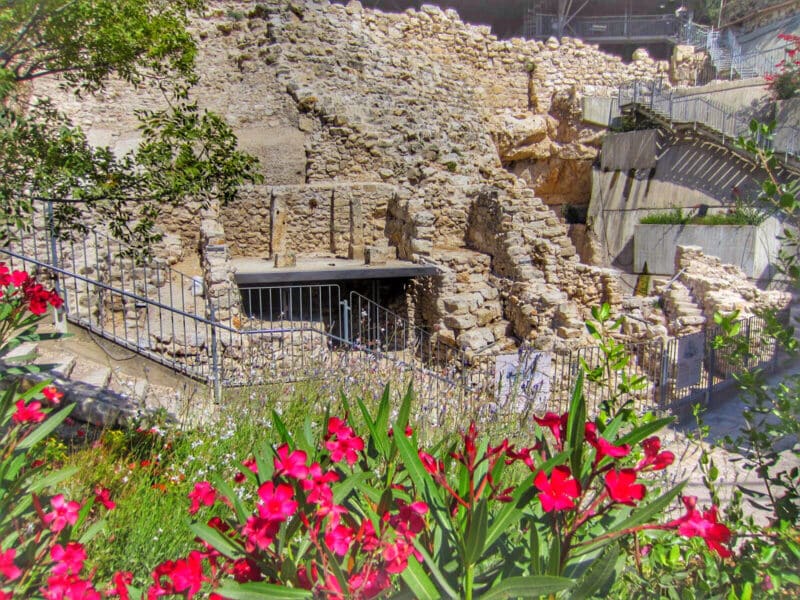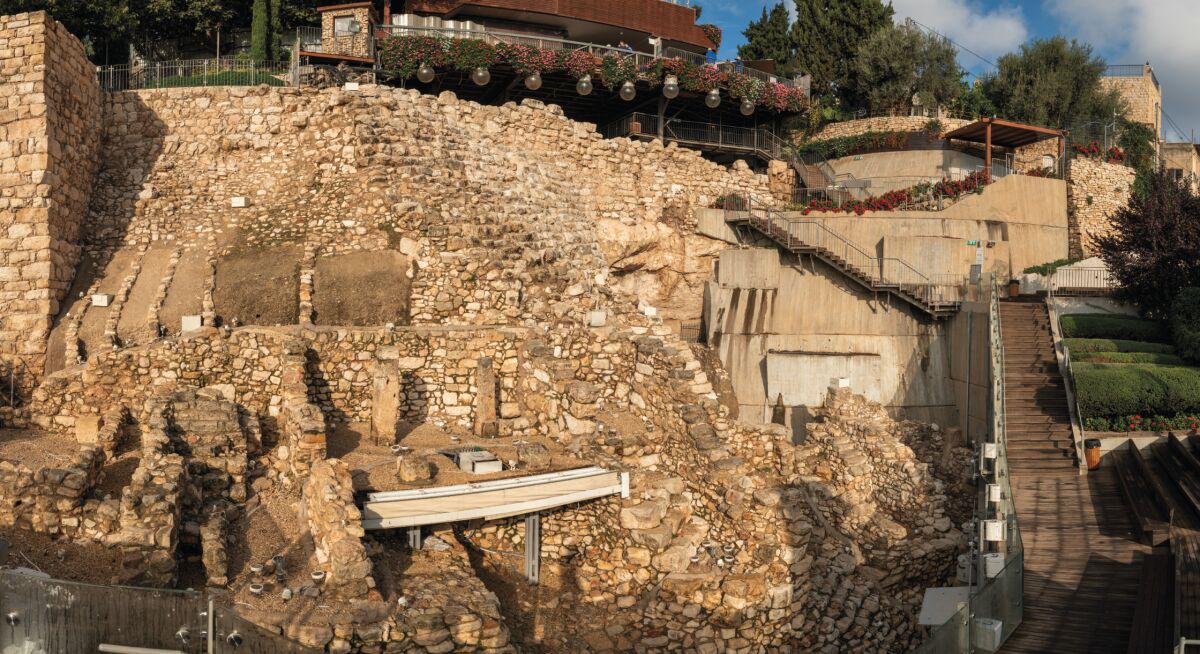The Stepped Stone Structure, located in the City of David in Jerusalem, is a monumental feature that holds significant historical and archaeological importance. Dating back to approximately 1000–900 BCE, this rampart is believed to have supported a large structure, possibly King David’s palace or a related royal-administrative complex. Its discovery and study have provided valuable insights into the ancient city’s architectural sophistication and its pivotal role during the reigns of David and Solomon.
Historical and Biblical Significance
The Stepped Stone Structure is thought to be part of the Large Stone Structure, which may have been associated with King David’s palace. Biblical references to the City of David and its significance as a royal and administrative center during the time of King David and Solomon provide context for understanding the function of this remarkable site. The structure’s association with the royal complex highlights its importance in establishing Jerusalem as the political heart of ancient Israel.

Many scholars have debated the structure’s purpose, with some suggesting it supported a citadel or a palace. However, its exact role remains open to interpretation. What is clear is that this massive rampart helped define the city’s skyline during the 10th and 9th centuries BCE, symbolizing the wealth, power, and architectural expertise of the Israelites.
Architectural Mastery
The design of the Stepped Stone Structure reflects the engineering ingenuity required to overcome the challenging topography of the City of David. The steep, rocky hillside where the structure is located presented significant challenges for builders, but they overcame these obstacles with remarkable skill. The structure rises 44 feet, equivalent to more than five modern stories, and spans 43 feet in width.
The 55 steps of the structure are divided into two sections: the upper steps, which are made from large limestone blocks, and the lower steps, constructed with smaller stones. The use of limestone, a durable and locally available material, demonstrates the builders’ understanding of both the landscape and the available resources. This careful craftsmanship is a testament to the advanced architectural techniques employed during this period.
Strategic Location in Ancient Jerusalem
Situated at the summit of the City of David, the Stepped Stone Structure was part of a larger network of buildings and fortifications that dominated the landscape of Jerusalem during the time of King David. The site itself was the center of administrative and royal activity, which underscores its strategic importance. The structure would have provided support to a significant building, reinforcing the political and spiritual significance of the city as the capital of the Israelite kingdom.

From an aerial view, the structure is prominently located beneath a square excavation trench, serving as a focal point for archaeologists studying ancient Jerusalem. Its continued preservation and study allow for a deeper understanding of the early development of the city and its role in the biblical narrative.
Connection to Biblical History
The Stepped Stone Structure’s connection to the biblical accounts of King David’s reign provides valuable context for its significance. While it is impossible to definitively link the structure to specific events or figures mentioned in the Bible, its placement and scale suggest that it played a key role in the establishment of Jerusalem as the heart of Israelite civilization.

The Bible references the City of David in various passages, especially in connection with the consolidation of power by David and the construction of Solomon’s Temple. The Stepped Stone Structure may have been part of this larger architectural and political development, offering a glimpse into the grandeur of Jerusalem during this transformative period in ancient history.
Conclusion: A Monumental Legacy
The Stepped Stone Structure is more than just an archaeological feature; it is a symbol of ancient Jerusalem’s power, sophistication, and enduring legacy. Its architectural brilliance and historical significance make it a key point of interest for scholars and visitors alike. As excavations continue and new insights are gained, this monumental rampart will remain an essential part of our understanding of King David’s Jerusalem and the early history of the Israelite kingdom.
This structure not only serves as a reminder of the ingenuity of the Israelites but also stands as a testament to the city of Jerusalem’s deep biblical and historical roots, which continue to captivate the world today.

